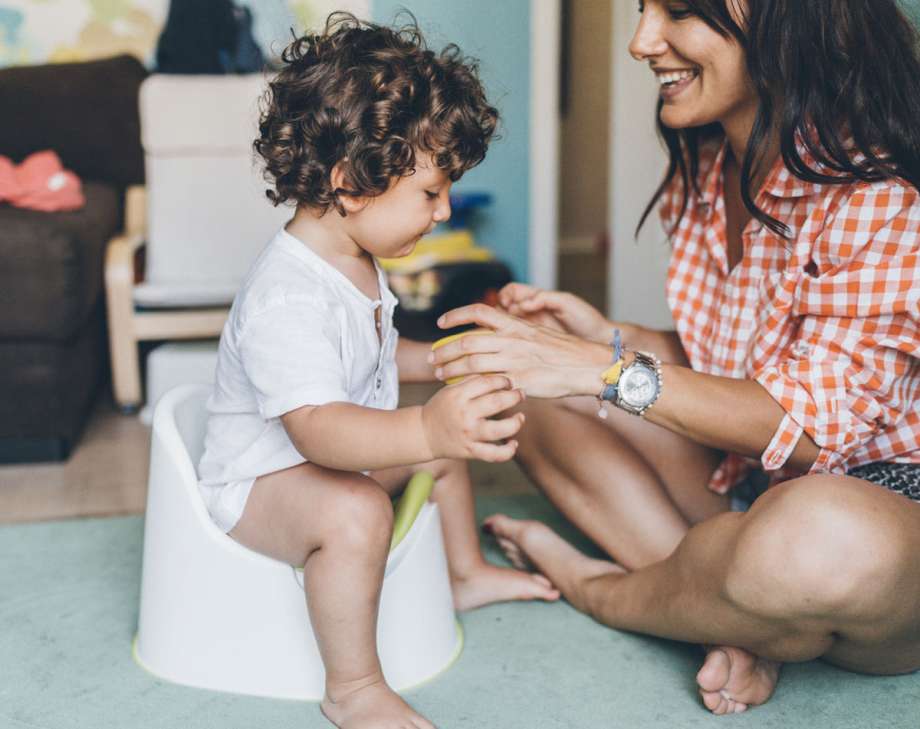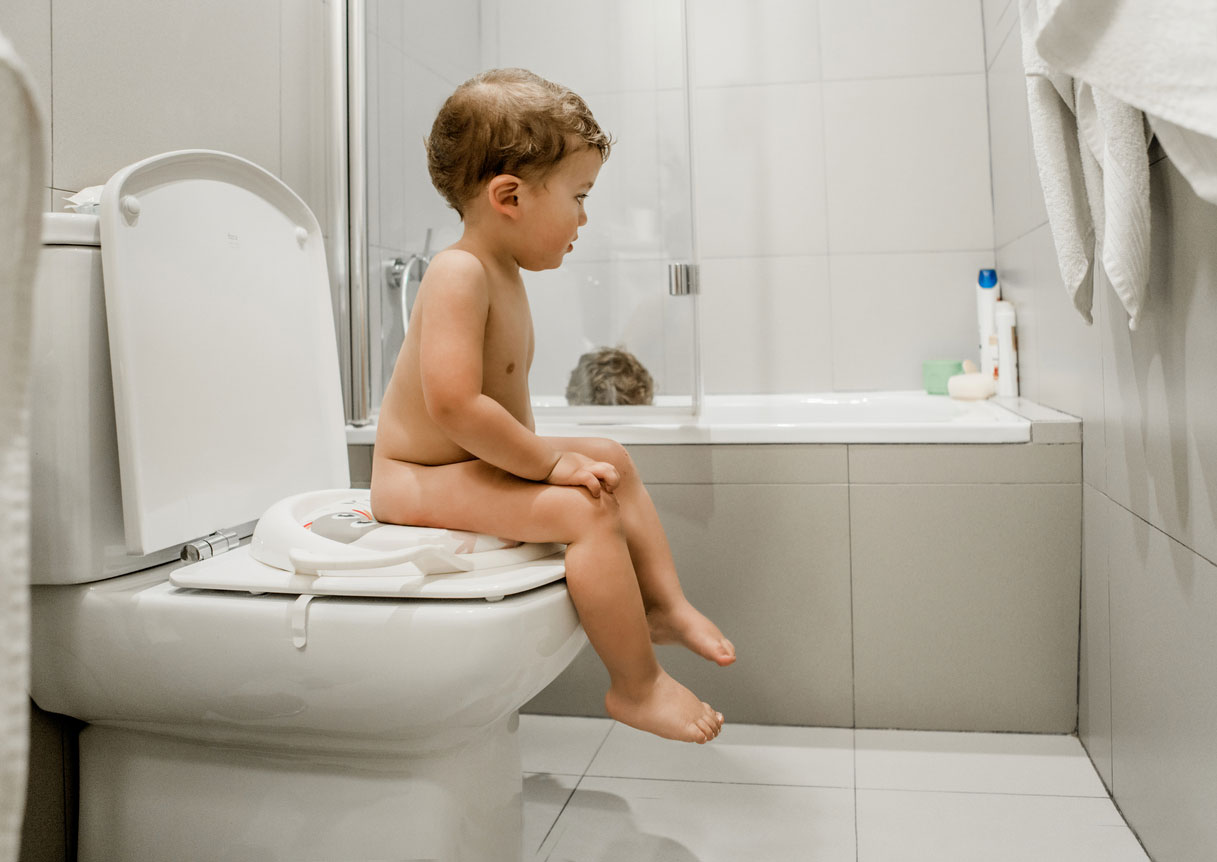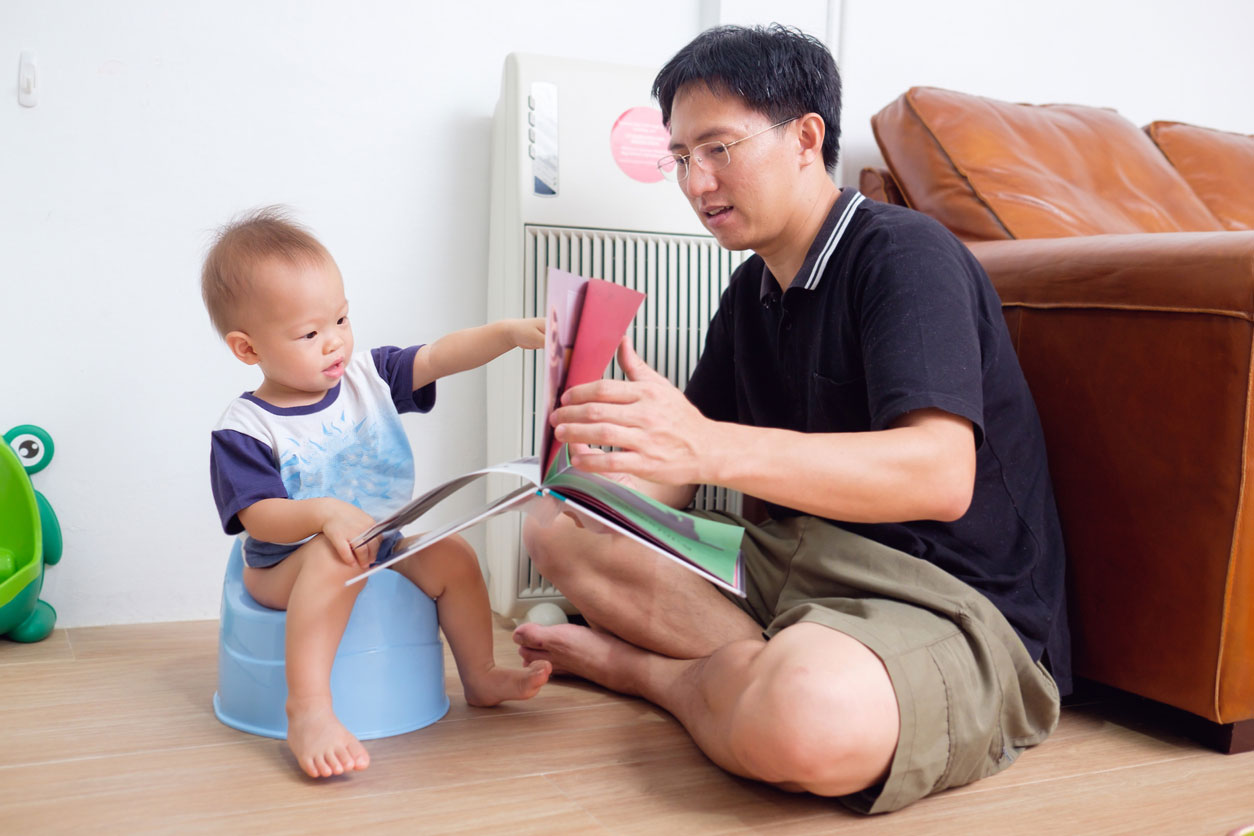Start the New Year With the Resolution of Potty Training

When I say potty training do you immediately think accidents, stained furniture, and piles of laundry? While this is many people’s experience, it doesn’t have to be yours. That’s right, sometimes we make potty training much harder than it needs to be. In my experience, I have seen “ready” children potty train in as little as two weeks and the average is about one to two months.
22 percent of children will be potty trained by the time they are two and a half years old, and that number increases to 88 percent by the time they are three and a half years old. On average, girls begin potty training between 18 and 24 months, while boys begin a little later at three years old.
More: Time to Ditch the Diapers! 10 Parent-Approved Potty Training Techniques
No matter where your child falls in these statistics, potty training should be led by their intelligence, language skills, emotional intelligence, and their desire (to use the potty). Here are some tips for successful potty training this year:
Introducing the Potty
Be intentional about introducing the potty consistently. It’s helpful to set a time to specifically offer the potty such as waking up in the morning or going down for a nap. Before or after bath time is a great time as well to introduce and offer the potty. If your child poops at the same time each day, you can schedule your trips to the bathroom accordingly.
Go Slow

Do not force your child to sit if they are scared. You will make them more afraid or cause them to refuse. When they are ready, you can place them on top and help them sit. There are inserts for adult toilets that convert it to a toddler toilet or you can purchase a toddler toilet that sits on the ground beside the adult toilet. If you choose the insert, be sure to use a stool so your child can get themself up and off which supports self-confidence and independence.
Model
You can (and should) model using the toilet for your child. You can show them that you are safe. Throw in some language development by narrating what you are doing like, “I’m sitting on the toilet so I can put my pee in there,” and “Time to flush!” After washing your hands, you can offer to your child by saying, “You do” or “Your turn” for younger children or “Do you want to try?” for older toddlers.
Normalizing the Potty

Fill your home with books about using the potty. There are plenty out there. The more your child hears “bathroom words” and sees toilets, the easier they will begin to accept the idea of using the toilet. Play potty with baby dolls and narrate the steps to using the potty. If you see them pooping, ask them if they want to “put it in the potty.”
More: Potty Training Tips for When Your Kid Won't Go
Be Cautious
If you are potty training your child for any reason other than they are ready, you are risking your child’s success. Children are incredibly smart and if they are not ready, they might, and often do, refuse to potty train all together which leads to very prolonged diaper wearing. Remember, your job is to be their cheerleader and their safety net. You are there to reassure them that they are safe and to cheer them on with each thing they try.
Teach Boundaries
It’s your responsibility to teach your child healthy body boundaries. This includes safe people and who they can trust with their body. It is always best to use anatomically correct terms so that children are never confused and are always able to identify if there is a problem. You will also have to teach them about self-pleasure including where it is and is not appropriate to masturbate. Young children (12-24 months) may masturbate because of the pleasure aspect. There is no sexual component until hormones set in with puberty.
Nap Time
Children still need diapers at nap time. Anytime their body is asleep, they are more likely to have an accident since they are relaxed. If you notice that they are consistently having dry diapers when waking up from nap, you can have a conversation with your child about napping in underwear. Some children may not be ready or may exhibit symptoms of anxiety. If so, continue to use diapers at nap time and revisit the discussion in a few months.
Self Work
Keep yourself in check during this process. Remember that your child will eventually get the hang of it. Do not have crazy expectations and be very, very patient. Never shame your child for accidents. Remember that they are trying their best and you never want them to feel like that isn’t good enough for you.
Just like everything else, potty training will look different from child to child and from family to family. Let your child lead and be receptive to their cues, body language, and words. You are your child’s best cheerleader and you get to decide if this is a pleasant or stressful journey for your child.
For more potty training tips and tricks, check out one of my go-to resources, Toilet Training The Brazelton Way.

